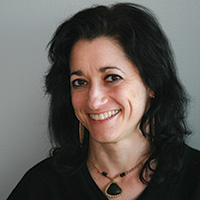Names like Aretha Franklin and Marvin Gaye, along with the Motown sound, helped put Detroit permanently on the music map, but the Motor City’s musical past is just one component of a vibrant arts scene. Theater, visual arts and performing arts are equally as active.
Detroit can trace its cultural riches to the auto industry. As wealth spread, early industry moguls funneled money into creating museums and theaters, leaving a legacy that continues to this day.
The majority of Detroit’s cultural institutions are located in the midtown area, including the Detroit Institute of Arts, the Detroit Science Center, the Charles H. Wright Museum of African American History, the Detroit Historical Museum and the Museum of Contemporary Art Detroit. A few miles west in Dearborn is The Henry Ford, the world’s largest indoor and outdoor American history attraction.
The Detroit Institute of Arts (313.833.7900; www.dia.org), which can accommodate large functions, possesses one of the largest art collections in the country, with some 60,000 works.
“We’re in demand,” says Lisa Rezin, director of group sales for the Detroit Institute of Arts. “We’re an attractive venue for corporate events due to a new $158 million renovation.”
The museum closed for six months and reopened last November.
“We’re positioning ourselves to be the premier attraction in Detroit,” she says.
Part of the renovation included repositioning of art signs within the museum’s more than 600,000 square feet of gallery space.
“The art is presented differently, lowered to more eye-level, and the colors are warm and inviting—almost a living room setting,” Rezin says. “We led focus groups and found the average person is not an art major but wants to understand, so we simplified the verbiage next to the paintings for the public.”
Groups can meet in the museum’s Great Hall and Rivera Court for a classic museum setting, accommodating up to 500 for dinner and up to 1,000 for a strolling event. Kresge Court, an artwork in itself with each wall representing a different region of architectural design, can hold 250 seated and 300 strolling.
The Museum of Contemporary Art Detroit (313.832.6622; www.mocadetroit.org), located in a former auto dealership, spans 22,000 square feet and can host groups as well as arrange group tours.
Another off-site option, the Charles H. Wright Museum of African American History (313.494.5800; www.maah-detroit.org), the world’s largest African-American heritage museum, features an impressive glass dome that is wider than the State Capitol dome. The museum offers a 317-seat theater, two large banquet-style galleries, two classrooms and a rotunda area.
At the Detroit Historical Museum (313.833.7935; www.detroithistorical.org), more than 300 years of life in the region is relived, with cobblestone streets of 1840s Detroit, an auto assembly line in action and toy trains from the 1700s, and guests can take the ship’s helm in the S.S. William Clay Ford Pilot House. The 78,000-square-foot facility is open to group functions.
In Dearborn, the 38,500-square-foot, $16 million Arab American National Museum (313.582.2266; www.arabamericanmuseum.org) is open to groups. Venues at the museum include the community courtyard and the atrium on the museum’s second floor, accommodating a variety of groups for banquets, receptions and other events. The museum also offers a boardroom, an auditorium and a rooftop terrace.
One of Detroit’s premier art galleries, the Scarab Club (313.831.1250; www.scarabclub.org), is open to groups. The Scarab Club building, constructed in 1928, is listed on the National Register of Historic Places and features a main gallery; a beamed lounge area with a fireplace; artists’ studios; and a walled garden and courtyard.
Popular on the underground art scene, Pewabic Pottery (313.822.0954; www.pewabic.com) near the Detroit River was founded in 1903 during the Arts and Crafts movement. It is famous for its tile and pottery in unique glazes and today offers hands-on workshops as well as a museum.
The Heidelberg Project (313.267.1622; www.heidelberg.org)—the work of artist Tyree Guyton—is set in an outdoor art environment covering a two-block square on Detroit’s east side. The display makes a statement about urban life with its abandoned homes, cars and vacant lots adorned with thousands of colorful polka dots, stuffed animals, old dolls and other discarded materials.
For performing arts, the Detroit Theater District is the nation’s second largest in terms of seats and features most major musical and theatrical performances. The main attraction is the refurbished Fox Theatre (313.471.3200; www.olympiaentertainment.com), the second-largest theater in the country after Radio City Music Hall, as well as the world’s largest Masonic Temple.
Opened in 1928, the Fox originally featured vaudeville, live shows, organ concerts and talkie films. In the 1960s it became the site for Motown-hosted performances and talent searches.
The theater was restored in1988 at a cost of $12 million and hosts Broadway shows and big-name concerts. Highlights include its six-story grand lobby and the 13-foot-diameter chandelier inside the auditorium.
For groups, the Fox Theatre can host up to 800 guests for sit-down dinners, 1,500 for receptions and 4,800 for a business meeting or private concert event.
The Motown Historical Museum (313.875.2264; www.motownmuseum.com) is a group favorite. Outside of the traditional tours, the museum can be rented for cocktail parties of up to 150 people, including a tour. Groups can arrange a strolling buffet or request an event tailored to its needs.
“The standard request is for celebrity-guided tours,” says Audley Smith, chief operating officer of the museum.
Two local icons, Duke Fakir, an original member of Motown’s the Four Tops, and Martha Reeves, of Martha Reeves and the Vandellas, offer their services to groups.



